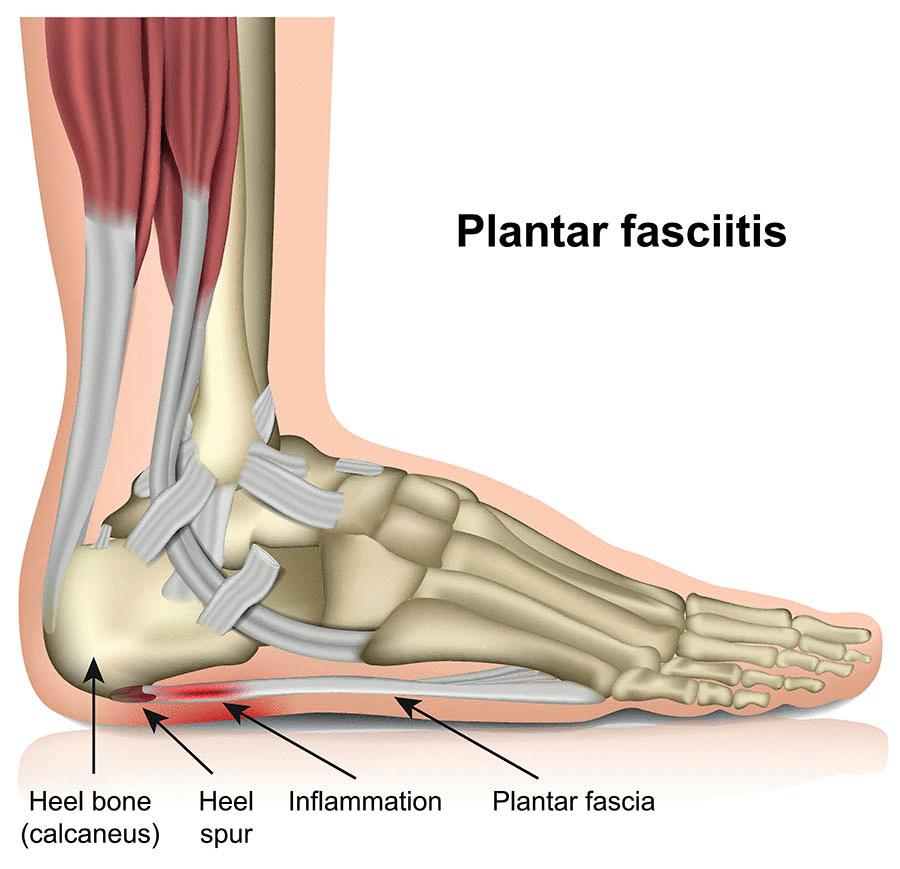Plantar fasciitis is a common foot condition described by plantar fascia inflammation, which is a thick band of tissue that puts the heel bone and the toes together. People with this disease often have it hurt their heels when they take their first steps in the morning or after long periods of sitting. Fortunately, incorporating specific exercises and stretches into your daily routine can help ease pain, improve flexibility, and promote healing. Here are some practical exercises and stretches for managing plantar fasciitis pain:
Calf Stretches
Tight calves can contribute to plantar fasciitis. Spreading out the calf muscles can relieve tension on the plantar fascia.
How to do it:
- Stand facing a wall with your hands against it.
- Step one foot back, keeping it straight and the heel on the ground
- You should feel a stretch in the back leg when you bend your front knee and lean forward.
- Hold for 15-30 seconds, then switch legs. Repeat 2-3 times for each leg.
Plantar Fascia Stretch
This stretch directly targets the plantar fascia, promoting flexibility and reducing pain.
How to do it:
- Sit in a chair with one foot overlapping over the opposite knee.
- Pull the affected foot’s toes back towards your shin using your hand.
- Stretch for 15 to 30 seconds, then once more two or three times.
Towel Stretch
This exercise enhances the suppleness of the plantar fascia and the Achilles tendon.
How to do it:
- Sit on the floor with your legs added to in front of you.
- Take a towel and loop it around the ball of the affected foot.
- Keeping your knee straight, gently pull the towel towards you until you feel a stretch in your calf and foot.
- Keep in mind for 15-30 seconds and repeat 2-3 times.
Foot Rolling
You can depend on a tennis ball or a frozen water bottle to work by massaging the plantar fascia and reducing inflammation.
How to do it:
- Sit in, put a tennis ball or a frozen water bottle under your foot, and sit down.
- Roll it back and forth while putting light pressure on the arch of your foot for 5-10 minutes.
Heel Raises
Strengthening the muscles in your feet can help support the plantar fascia.
How to do it:
- Stand with your feet hip-width apart.
- On the balls of your feet, slowly lift and take off your heels.
- Hold for a moment, then lower your heels back down.
- Repeat 10-15 times for 2-3 sets.
Toe Flexor Stretch
This stretch targets the toe flexor muscles, which can become tight and contribute to plantar fasciitis.
How to do it:
- Sit down and place your affected foot across your On the other knee.
- Press your toes against your shin with your fingers, stretching the underside of your foot.
- Hold for 15 to 30 seconds, and then do it repeatedly.
Arch Strengthening
Strengthening the arch can provide support to the plantar fascia.
How to do it:
- Sit or stand with your feet flat on the ground.
- Try to lift your arch without curling your toes, as if trying to make your foot shorter.
- Hold the arch lift for 5 seconds, then relax.
- Repeat 10-15 times.
Foot pain is often caused by conditions such as plantar fasciitis and heel spur. The plantar fascia ligament plays a key role in supporting the arch of the foot, and when inflamed, it leads to plantar fasciitis symptoms like heel discomfort, especially with flat feet. Common treatments include physical therapy, where exercises help stretch and strengthen the fascia. A night splint can also be used to keep the foot in a dorsiflexed position, easing pain in the morning. While nonsurgical treatment are preferred, severe cases might require ankle surgery to relieve chronic pain. Plantar fasciitis treatment options are most effective when started early to prevent further complications.
Plantar heel pain is a common issue, often linked to conditions like plantar fasciitis and Achilles tendonitis, which can cause sharp pain in the heel, especially with a tight Achilles tendon. Patients with flat feet are particularly at risk, experiencing discomfort that worsens with morning pain or after long periods of inactivity. Physical therapists recommend stretching exercises such as toe curls to strengthen connective tissue and relieve strain on the Achilles tendon. Nonsurgical options like shockwave therapy can help heal tiny tears and prevent further damage, though severe cases may require plantar fasciitis surgery. In rare instances, complications like a stress fracture or bone spur may occur, making early intervention and treatment critical to managing symptoms
Conclusion
Including these exercises and stretches into your daily routine can significantly alleviate plantar fasciitis pain and promote healing. It’s essential to perform them gently and consistently. However, talking to a doctor or nurse about a personalized treatment plan is crucial if pain persists or worsens. With patience and dedication, you can take steps toward recovery and regain comfort in your daily activities.

